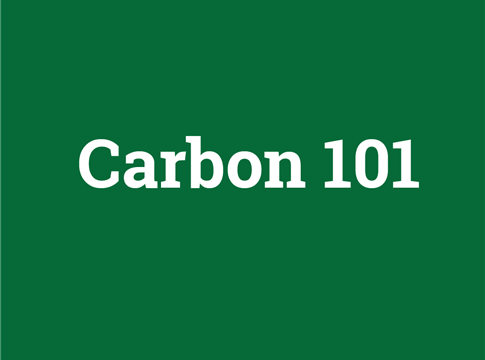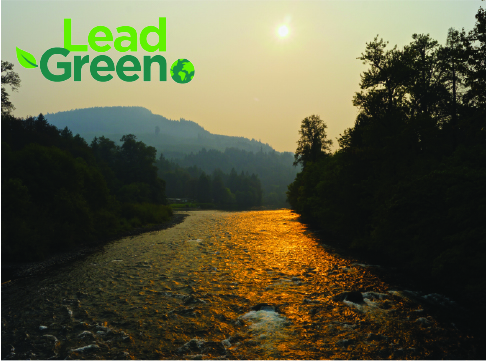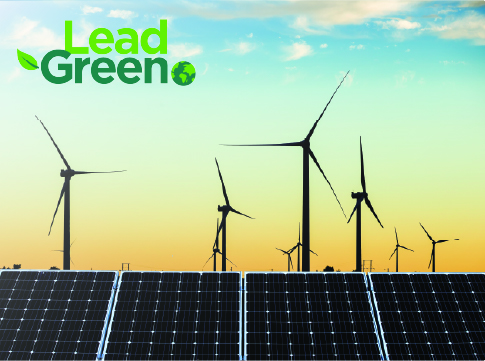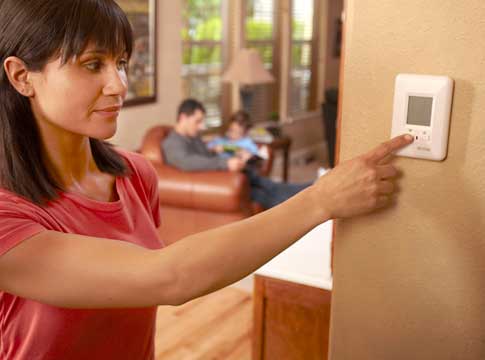Related News
Related News
-
Sustainability Snapshot - Celebrating Energy Efficiency Projects in the Community
Sustainability Snapshops highlight impactful projects completed by EWEB's Customer Solutions department, as a way to celebrate the meaningful work happening behind the scenes.
Find Out More -
EWEB Sets 2026 Budget and Rates, Advances Evaluation of McKenzie Valley Service Territory Realignment
Taken together, the 2026 budget and rate adjustments and the territory-realignment evaluation reflect EWEB’s dedication to responsible financial stewardship, modern, resilient utility infrastructure, and thoughtful planning for the future.
Find Out More -
EWEB secures $2.5 billion of reliable, affordable, carbon-free energy for customers
The new contract with EWEB’s largest energy supplier, the Bonneville Power Administration, forms the foundation of a diverse energy portfolio.
Find Out More -
EWEB Hometown Heroes compete internationally
Out of 290 teams from 14 different countries, EWEB's Lineman Rodeo team places in the top third of competitors.
Find Out More -
Let's Talk Turkey. Is your family ready for winter?
We're heading into the holidays, but that also means snow, ice, and not-so-nice weather might be in the forecast. Here are some tips to prepare in advance.
Find Out More -
The Bonneville Power Administration Rate Change and Your EWEB Bill
BPA’s finalized rate increase is smaller than projected, and EWEB’s pass-through adjustment effective October 1, 2025 will now be 2.7% for residential customers—down from the anticipated 4%.
Find Out More -
Join the Pledge to Prepare
When you think about getting ready for an emergency, you probably have questions. You aren't alone. Preparing for emergencies can be overwhelming, which is why EWEB has put together a 12-month program to help you and your family get two weeks ready.
Find Out More -
You can’t predict the next disaster, but you can prepare
The earthquake lasted less than a minute. But now the power’s out. The tap runs dry. Cell service is spotty. Would you be ready?
Find Out More -
EWEB completes helicopter installation of salmon habitat features
EWEB adds downed trees and 2,000 tons of gravel to the Uupper McKenzie River below Tamolitch Falls to improve spawning habitat.
Find Out More -
Court rules in favor of EWEB in Carmen-Smith litigation
The U.S. District Court in Eugene has granted EWEB's motion to dismiss a lawsuit brought under the Endangered Species Act pertaining to fish passage at EWEB’s Trail Bridge Dam. The favorable ruling clears the way for EWEB to continue advancing towards implementation of permanent fish passage at the dam.
Find Out More -
EWEB proposes modified plan for permanent fish passage at Trail Bridge Dam
After eight months of extensive collaboration and analysis with scientific experts at two federal regulatory agencies, EWEB is proposing an improved plan to build permanent fish passage facilities at Trail Bridge Dam on the McKenzie River.
Find Out More -
Sustainability Snapshot - Ideal Steel July 2025
Our second Sustainability Snapshop highlights a project where EWEB helped a local industrial warehouse upgrade over 1,000 flourescent lights to new efficient LEDs.
Find Out More -
EWEB prepares for wildfire season with risk mitigation measures
EWEB is building a more resilient electric system to weather various types of disasters, from wildfire to winter storms.
Find Out More -
EWEB Pilots New Line Safety Program for 4th graders.
This year, EWEB is ramping up power line safety for children, specifically 4th graders.
Find Out More -
Improving habitat resiliency throughout the Upper McKenzie
Environmental Responsibility is a core guiding value for EWEB decision-making. This summer, EWEB continues its commitment to environmental stewardship with a robust slate of habitat enhancement updates throughout the upper McKenzie River, across the footprint of the Carmen-Smith Hydroelectric Project.
Find Out More - Show More
Carbon - What it is, why it's important and what you can do about it
April 03, 2023 • Ashley Cissna, EWEB Communications

It is hard to go to anywhere these days and not see references to carbon and climate change. Climate change is a key challenge facing our society and something we should all be paying attention to. But it is hard to pay attention or know what to do when we don’t fully understand what everyone is talking about.
Stepping into the world of carbon, you may feel like you need a chemistry degree to join the discussion. Let’s take a minute to break it down and make sure we are all on the same page.
First things first, what is “carbon?”
“Carbon” is a word that has a lot of meanings these days. But if you take it back to its literal, original meaning it is simply a chemical element. You’ll find it on any periodic table and widely distributed in nature. Elemental carbon, meaning carbon all on its own, isn’t all that plentiful, making up only .025 percent of the Earth’s crust.
meaning it is simply a chemical element. You’ll find it on any periodic table and widely distributed in nature. Elemental carbon, meaning carbon all on its own, isn’t all that plentiful, making up only .025 percent of the Earth’s crust.
Combine carbon with other elements however, and you get carbon compounds. There are nearly ten million known carbon compounds. Some common carbon compounds you may be familiar with, such as magnesium & calcium, coral and sea shells, coal, petroleum, all plant and living tissue, and as a gas in the forms of carbon dioxide and carbon monoxide.
So, what about all the other carbon you hear about – carbon emissions, carbon footprint, carbon offsets? Believe it or not, those terms don’t refer to the carbon element, but to different components of the carbon cycle which revolve around a carbon compound – carbon dioxide. Ever heard of it?
What’s up with carbon dioxide?
Carbon dioxide is a naturally occurring gas. It is produced by decomposing vegetation, venting volcanoes, outgassing from the ocean, and yes, even belches from ruminant animals.
Carbon dioxide has always been around, and until the industrial revolution, the carbon dioxide content in the air remained relatively consistent due to the natural carbon cycle. The carbon cycle consists of the production of carbon dioxide, called carbon emissions, and then naturally occurring processes that remove carbon dioxide from the atmosphere, called “sinks.” The ocean, soil, and forests are the world’s largest carbon sinks.
Carbon emissions, also known as greenhouse gas emissions, aren’t inherently bad. Without them, the world would be a much less pleasant place to live. In fact, it would be too cold to sustain life on Earth. Greenhouse gases act like the glass walls of a greenhouse (hence the name). Heat from the sun is allowed to pass through the atmosphere and warm the Earth’s surface, and then as it cools the heat is released back into the air. Greenhouse gases keep some of the heat trapped in the atmosphere, keeping the earth’s temperature at an average, balmy 57° F.
Carbon and climate change
So, if greenhouse gas emissions aren’t bad, then what is the big deal? Remember when I said that until the Industrial Revolution the carbon content had been stable? Well, it isn’t now.
 For the last 150 years, we’ve burned increasing amounts of carbon to generate energy for manufacturing, transportation and electricity production. By creating more carbon emissions than the Earth can absorb, we have upset the balance of the natural carbon cycle.
For the last 150 years, we’ve burned increasing amounts of carbon to generate energy for manufacturing, transportation and electricity production. By creating more carbon emissions than the Earth can absorb, we have upset the balance of the natural carbon cycle.
This increase in carbon emissions is creating a thicker layer of greenhouse gases, so less hot air can escape, and the Earth is getting warmer. While we may not notice the global shift in warmer temperature, it is causing changes around the world on land, in oceans and in the air, upsetting the delicate balance that sustains life on our planet through severe weather events of all kinds – cold snaps, polar vortexes, heat waves, droughts, floods, wildfires, and much more.
What do can we do about it?
Now that we know what is causing climate change, what can we do about it? This is where your carbon footprint and carbon offsets come into play. Your carbon footprint is the total number of greenhouse gas emissions that are created by your actions. The decisions you make in how you heat your home, get to and from work, and where you purchase goods, services and foods can make a difference in the size of your footprint.
Every person and business has a carbon footprint. Some footprints are larger than others. Did you know that your footprint goes up with income? To help sustain our planet and future, we all need to reduce our carbon footprints where we can.

The first step in reducing your carbon footprint is to measure it.
- Your carbon footprint is measured in metric tons of carbon dioxide equivalent (MT CO2e).
- 1 Metric Ton = 1,000 Kilograms = 2,205 Pounds
- CO2e = carbon dioxide equivalent. This takes all the greenhouse gases that have differentwarming potentials in the atmosphere and puts them into a common unit so they can be added together. Carbon dioxide, CO2, is the most prevalent greenhouse gas, making up 76% of all greenhouse gas emissions. The remaining 24% is a mixture of methane, nitrous oxide and synthetic gases.
According to the City of Eugene’s Climate Action Plan 2.0, the average carbon footprint of a Eugene resident can range between 5-9 MT CO2e per person annually, depending on the size of your home and if you use electricity or natural gas to heat your home. This estimate does not include emissions from air travel or emissions generated from production of purchased goods, services, and food, which can be significant and tend to go up based on income.

Take a few minutes to estimate your personal emissions using free, publicly available and easy to use carbon footprint calculators. Berkeley’s Cool Climate Carbon Footprint Calculator is a good place to start. Their calculator uses regional emissions for electricity rather than EWEB’s 90% carbon-free electricity, so it isn’t exactly accurate for EWEB customers, but gives a good estimate.
Once you know your carbon footprint, reflect on ways you can work to reduce it. Most carbon calculators give suggestions on ways to lower your footprint. Here are a few suggestions from EWEB:
Based on results from the City of Eugene’s CAPT2.0, transportation makes up the majority of local emissions, so start with your transportation choices:
- Ride a bike, use public transportation, carpool, car-share with EWEB’s Move Green program
- Purchase an e-bike with help from EWEB’s Move Green electric bike rebate.
- Purchase an electric vehicle. You can install a level-2 charging station in your home with assistance from EWEB. Be sure to charge your vehicle during off-peak times. Learn more about peak power and how it affects climate change and cost here.
There are plenty of changes you can make in your house and daily life that have an impact on your carbon footprint:
- Turn off lights when not in use
- Switch to LED lightbulbs
- Eat a carbon-friendly diet. One-third of all food emissions in the United States come from red meat and dairy products, due to the amount of land, food and energy required to raise animals. Buying local produce and poultry can make a BIG difference. , also known as beans and lentils are the most carbon-friendly food.
- Shop local – buying local produce and goods cuts down on transportation emissions.
- Line dry your laundry
- Set your winter household thermostat setting to 65° in the winter and 78° in summer.
- Purchase green energy through EWEB. EWEB’s energy portfolio is already 90% clean, with the majority of our power coming from hydropower sources. Almost no electricity is sourced from fossil fuels. By investing in Cleanpower with EWEB you can take pride in knowing you are buying 100% clean, renewable energy.
- Make energy efficiency upgrades. EWEB offers rebates and loans for residential and business customers, including landlords and tenants.
Want to do more?
 After you’ve maximized ways to reduce your carbon emissions, you can neutralize your remaining carbon footprint with carbon offsets.
After you’ve maximized ways to reduce your carbon emissions, you can neutralize your remaining carbon footprint with carbon offsets.
Investing in carbon offsets is the practice of reducing or removing greenhouse gases in one place to compensate for emissions elsewhere. Due to the lifestyles we live today, it isn’t feasible to eliminate all emissions.
Carbon offsets are generated by projects that implement a specific activity or set of activities intended to reduce greenhouse gas emissions, increase the storage of carbon, or remove greenhouse gas emissions from the atmosphere . Examples include building renewable energy projects, planting more forests, and carbon storage practices. Project developers must meet stringent rules and be verified by third-party auditors.
EWEB offers carbon offsets from the Klawock Heenya Forest Carbon Project. This project reduces commercial timber harvesting, improves wildlife habitat, enhances biodiversity and protects water quality for pink and coho salmon. Klawock Heenya is a 8,600-acre forest on Prince of Wales Island in southeast Alaska. The forest will sequester 664,000 MT of emissions over the first 20 years of its 40-year life.
EWEB residential customers can offset their carbon footprint for as little as $1.25 a month. We offer two investment options.
- Option 1: Offset 1 MT CO2e for $1.25 a month
- Option 2: Offset 5 MT CO2e for $6.00 a month
By purchasing carbon offsets, you are neutralizing your carbon footprint and contributing to a more sustainable future. Sign up for Carbon Offsets here. If you have specific questions about our Carbon Offset program, please email us at LeadGreen@eweb.org.
Carbon offsets are not a cure-all for climate change – only one part of a multi-faceted solution. Individuals and businesses need to first invest in technological innovations, embrace clean energy policies, in addition to making behavior and lifestyle changes. Together we can do more to help sustain our planet's future.
Related Programs
Support local carbon forestry projects aimed at expanding our understanding of natural climate solutions and enhancing the McKenzie Watershed.
Purchase Renewable Energy Certificates (RECs) by enrolling in Cleanpower and help displace dirty energy sources with wind, solar and other zero-emission energy sources.




